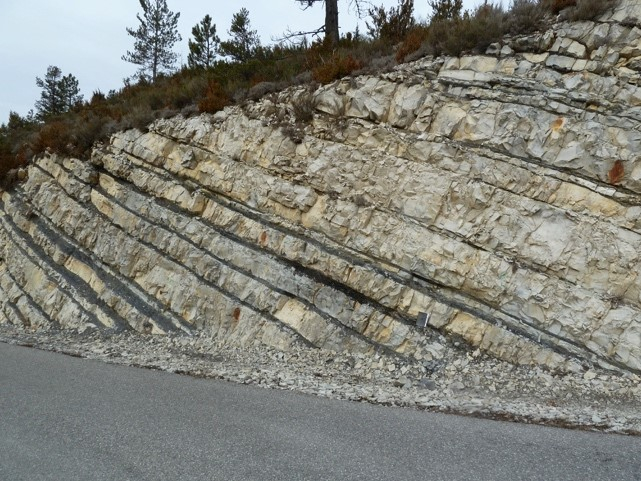The elliptical orbits of the planets of the Solar System are governed by the laws of universal gravitation and celestial mechanics. Astronomical modeling shows that this results in a chaotic system due to the interactions between the planets of the Solar System and the Sun, with possible instabilities in the planetary orbits.
The inner planets (Mercury, Venus, Earth and Mars) are the most concerned by this phenomenon of chaos, given their relatively small masses.
One of the expressions of this system is the highlighting in astronomical models of several resonant terms, that is to say of linear relations between orbital periodicities of the inner planets. Because of the chaos, these orbital cyclicities, present in the resonant terms, undergo variations of their periodicity at the scale of several tens of millions of years (Ma).
For ancient times, beyond about 50 Ma, these resonant terms can only be revealed in sedimentary series that have recorded paleo-environmental variations, themselves induced by changes in insolation at the Earth’s surface governed by the parameters of the Earth’s orbit.

Through an exceptional sedimentary record of astronomical periodicities of different frequencies on an outcrop of southeastern France dated from the Cretaceous, on the interval 113-123 Ma, the study, led by two laboratories, including the Institute of Celestial Mechanics and Calculation of Ephemerides at the Paris Observatory - PSL, has clearly highlighted a transition to 117 Ma in a resonant term.

The scientists confirm not only the strong chaos in the inner Solar System, but also the strong instability of the orbit of the planet Mercury.
In parallel, the analysis of the astronomical model La2004, probably the most reliable of all existing models (at least on the long term evolutions), also reveals a concomitant transition centered at 117 Ma in several resonant terms.
Reference
Astrochronology of the Aptian stage and evidence for the chaotic orbital motion of Mercury, Earth and Planetary Science Letters, 15 May 2023.
This result was acquired in the framework of the ANR AstroMeso and ERC AstroGeo projects coordinated by J. Laskar (Observatoire de Paris, IMCCE - UMR 8028).
Read also }
Quand la géologie révèle les secrets du Système solaire passé

